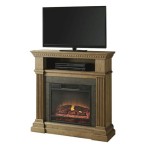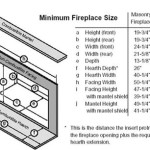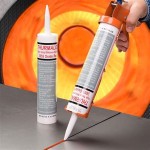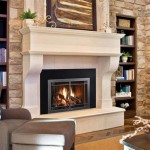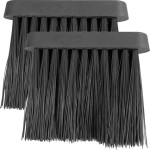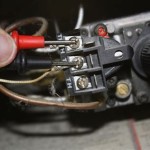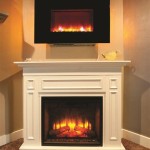```html
Outdoor Fireplace Prefab: A Comprehensive Guide
Outdoor living spaces have become increasingly popular, extending the functionality of homes beyond their interior walls. A key element in creating a cozy and inviting outdoor atmosphere is the outdoor fireplace. While traditional masonry fireplaces offer a certain aesthetic appeal, prefabricated outdoor fireplaces, often referred to as outdoor fireplace prefabs, present a compelling alternative with numerous advantages. This article delves into the world of outdoor fireplace prefabs, exploring their benefits, design considerations, installation processes, and maintenance requirements.
Benefits of Choosing a Prefabricated Outdoor Fireplace
Prefabricated outdoor fireplaces offer several distinct advantages over traditional site-built masonry fireplaces. These benefits contribute to their growing popularity among homeowners and landscape designers alike.
Cost-Effectiveness: One of the most significant benefits of a prefab outdoor fireplace is its cost-effectiveness. Because prefabs are manufactured in a controlled factory environment, they minimize labor costs associated with on-site construction. Masonry fireplaces require skilled bricklayers and extensive on-site work, significantly increasing the overall expense. Prefabs, on the other hand, arrive as a complete unit or in modular components ready for assembly. This reduces the hours required for installation and lowers the associated labor costs. Furthermore, the precision of factory manufacturing minimizes material waste, further contributing to the cost savings.
Faster Installation: Time is a valuable resource, and prefab fireplaces save considerable time compared to traditional construction. A masonry fireplace can take days or even weeks to build, depending on its complexity and the weather conditions. Prefab fireplaces can typically be installed in a matter of hours or a couple of days, depending on the complexity of the design and the required site preparation. The streamlined installation process allows homeowners to enjoy their outdoor fireplace sooner rather than later.
Consistent Quality: Factory-controlled manufacturing environments ensure a consistently high level of quality control. Each component of a prefab fireplace is manufactured to precise specifications, minimizing the risk of errors or inconsistencies that can occur with on-site construction. The materials used in prefabs are often subjected to rigorous testing to ensure durability and resistance to the elements. This consistent quality translates to a longer lifespan and reduced maintenance requirements compared to some traditionally built fireplaces.
Design Versatility: Contrary to the notion that prefabs are limited in design, they offer a wide range of aesthetic options. Manufacturers offer various styles, sizes, and finishes to complement any outdoor living space. From rustic stone veneers to sleek modern designs, prefabs can be customized to match the homeowner's personal taste and the overall landscape design. Moreover, many prefab systems allow for the addition of custom features such as mantels, hearths, and surrounding patio elements, further enhancing their design versatility.
Easier Permitting: In many jurisdictions, prefabricated fireplaces may have a simpler permitting process compared to custom-built masonry fireplaces. Because prefabs are typically certified to meet specific safety standards and building codes, the permitting process can be more straightforward. This can save homeowners time and effort in obtaining the necessary approvals for their outdoor fireplace project. However, it is still crucial to check local regulations and requirements before proceeding with the installation.
Design Considerations for Outdoor Fireplace Prefabs
Selecting the right outdoor fireplace prefab requires careful consideration of several factors. These design considerations ensure that the fireplace not only complements the outdoor space aesthetically but also functions safely and efficiently.
Size and Scale: The size of the fireplace should be proportionate to the size of the outdoor space. A large fireplace in a small patio can overwhelm the area, while a small fireplace in a sprawling backyard might get lost. Consider the dimensions of the space and how the fireplace will interact with other outdoor furniture and features. Measure the available space carefully and choose a fireplace that fits comfortably without obstructing traffic flow.
Style and Aesthetics: The style of the fireplace should align with the overall aesthetic of the home and the surrounding landscape. Choose a design that complements the existing architecture and enhances the ambiance of the outdoor space. Consider the materials, colors, and textures of the fireplace and how they will blend with the surrounding environment. Options range from rustic stone and brick to sleek concrete and metal designs.
Fuel Type: Outdoor fireplaces can utilize various fuel types, including wood, natural gas, and propane. Each fuel type has its own advantages and disadvantages. Wood-burning fireplaces offer a traditional ambiance and the crackling sound of burning wood, but they require a constant supply of firewood and produce smoke. Natural gas fireplaces are convenient and clean-burning, but they require a gas line connection. Propane fireplaces are portable and can be used in areas without access to a gas line, but they require a propane tank. Choose a fuel type that best suits the homeowner's needs and preferences.
Ventilation and Safety: Proper ventilation is crucial for the safe operation of any outdoor fireplace. Ensure that the fireplace is installed in a location that allows for adequate airflow and prevents the accumulation of harmful fumes. Consider the prevailing wind direction and avoid placing the fireplace in a location where smoke could blow back into the house or neighboring properties. Adhere to all local building codes and safety regulations regarding fireplace installations.
Placement and Location: The placement of the fireplace should be carefully considered to maximize its functionality and enjoyment. Choose a location that is easily accessible and offers a comfortable seating area. Consider the views from the fireplace and orient it in a way that allows for optimal enjoyment of the surrounding landscape. Avoid placing the fireplace too close to flammable materials such as trees, shrubs, or fences.
Installation and Maintenance of Outdoor Fireplace Prefabs
Proper installation is critical for the safe and efficient operation of an outdoor fireplace prefab. While some homeowners may choose to install the fireplace themselves, professional installation is often recommended to ensure that it is installed correctly and meets all applicable building codes. Regular maintenance is also essential to prolong the lifespan of the fireplace and prevent potential problems.
Site Preparation: Before installing the fireplace, the site must be properly prepared. This may involve clearing the area of debris, leveling the ground, and creating a solid foundation for the fireplace. Depending on the size and weight of the fireplace, a concrete slab or reinforced base may be required. Ensure that the foundation is level and strong enough to support the weight of the fireplace.
Assembly and Installation: Prefab fireplaces typically come with detailed instructions for assembly and installation. Follow the instructions carefully and use the appropriate tools and materials. Ensure that all connections are secure and that the fireplace is properly aligned. If installing a gas or propane fireplace, hire a qualified technician to connect the gas lines and ensure that they are properly tested for leaks.
Venting and Chimney System: Proper venting is essential for the safe operation of a fireplace. Ensure that the chimney system is properly installed and that it meets all applicable building codes. Inspect the chimney regularly for cracks, damage, or blockages. Have the chimney professionally cleaned at least once a year to remove creosote buildup and prevent chimney fires.
Regular Cleaning and Maintenance: Regular cleaning and maintenance are essential to prolong the lifespan of the fireplace and prevent potential problems. Remove ashes and debris from the firebox after each use. Inspect the firebox and chimney for cracks, damage, or deterioration. Repair any damage promptly to prevent further problems. Clean the exterior of the fireplace regularly to remove dirt, stains, and mildew. Apply a protective sealant or finish to the exterior of the fireplace to protect it from the elements.
Safety Precautions: Always follow basic safety precautions when using an outdoor fireplace. Never leave a fire unattended. Keep flammable materials away from the fireplace. Use a fire screen to prevent sparks from escaping. Ensure that the fireplace is properly ventilated and that there is adequate clearance from nearby structures. Never use flammable liquids to start a fire. Supervise children and pets closely when the fireplace is in use.
Outdoor fireplace prefabs offer a practical and aesthetically pleasing solution for creating a warm and inviting outdoor living space. By carefully considering design options, ensuring proper installation, and maintaining the fireplace regularly, homeowners can enjoy the benefits of an outdoor fireplace for many years to come.
```
Outdoor Fireplaces Round Grove S

Outdoor Fireplace Kits Stonewood S Cape Cod Ma Nh Ct

Outdoor Fireplace Kits Masonry Stone

Outdoor Fireplaces

Diy Outdoor Fireplace Kit Fremont Makes Hardscaping And Easy

Outdoor Fireplace Kits Masonry Industries Inc

Outdoor Fireplaces Diy Kits Plans Cape Cod Ma Ri

Modular Outdoor Fireplaces Masonry Fireplace Industries Inc

Prefab Outdoor Fireplace Patio Designs Diy

Outdoor Fireplace Kits Fireplaces Diy Stone Backyard
Related Posts

